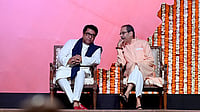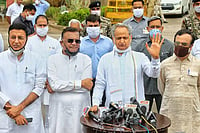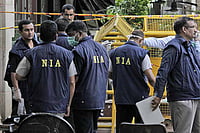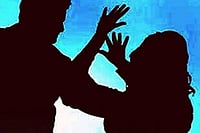If you thought Karl Marx, Mikhail Bakunin and the early theoreticians of revolutionary social change had been consigned—in the phraseology of the times—to the dustbin of history, you should have been in London’s Oxford Street on May Day. The threat of globalisation has revived anti-capitalist sentiment which was reeling from the blows suffered from Margaret Thatcher and the collapse of the Soviet Union. But the language of protest has changed.
To walk down a traffic-free Oxford Street, with a sprinkling of pedestrians, was a unique experience. The pavements are usually filled with shoppers and indow-gazers. The big department stores were closed, their huge glass windows boarded up against stone-throwers. Some smaller shops were open. The authorities were determined to prevent a repeat of the Year 2000 May Day protest when many shop windows were smashed and Sir Winston Churchill’s statue near the houses of the Parliament smeared with paint, with feathers pasted on his head for good measure. He was seen as the epitome of old-fashioned capitalism and imperialism.
As many as 5,000 demonstrators, some from distant parts of Britain and other countries, had been bottled up by as many police near one end of Oxford Street. Batons were occasionally used to keep them and their placards in control. The struggle continued for hours. A few heads were bloodied and a police horse injured before, cold and wet, the demonstrators went home after dark. The remains of charred cardboard cartons, symbolising protest as well as protection against the cold, were cleared by next morning and tourists were again queuing up. Civic sense combines with a tradition of protest in Britain.
Return Of History

Return Of History
Return Of History
Published At:
MOST POPULAR
WATCH
MORE FROM THE AUTHOR
×



















